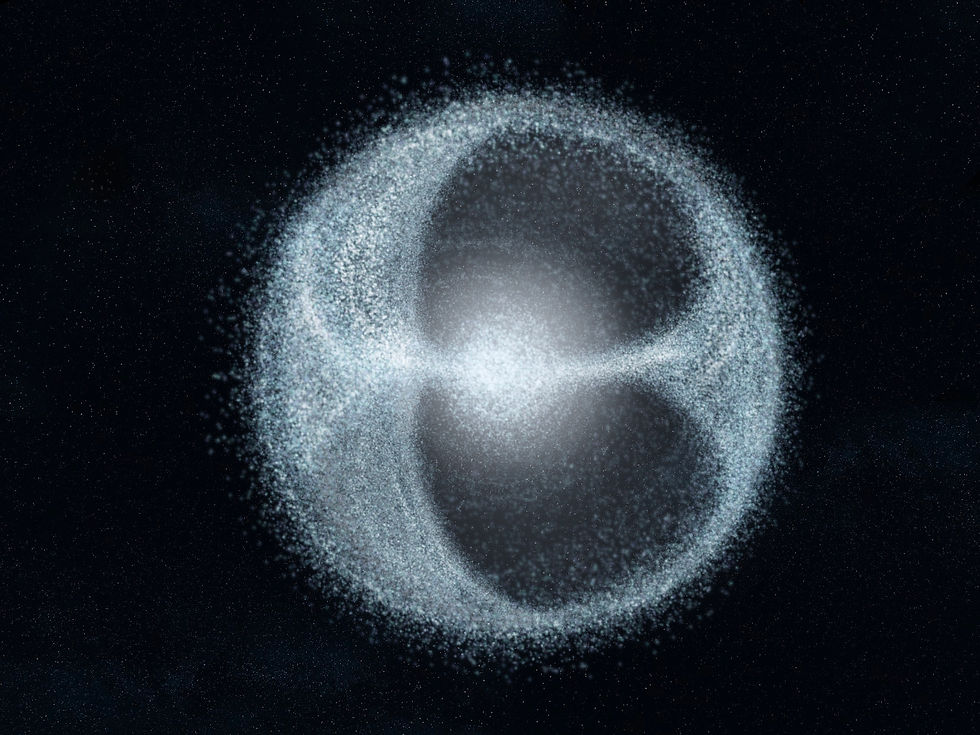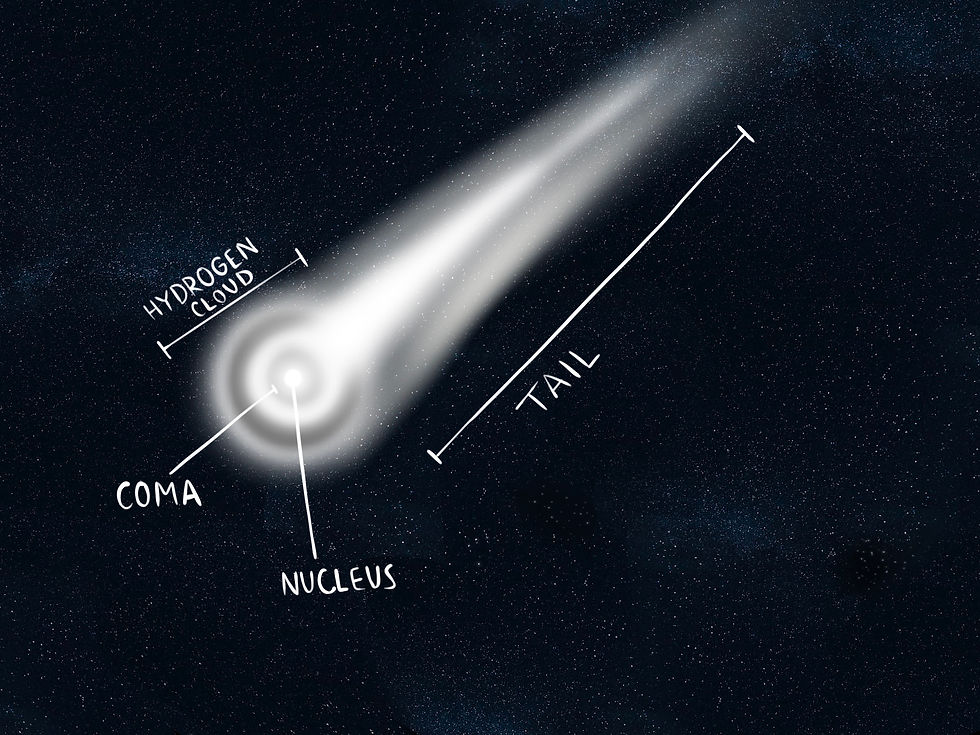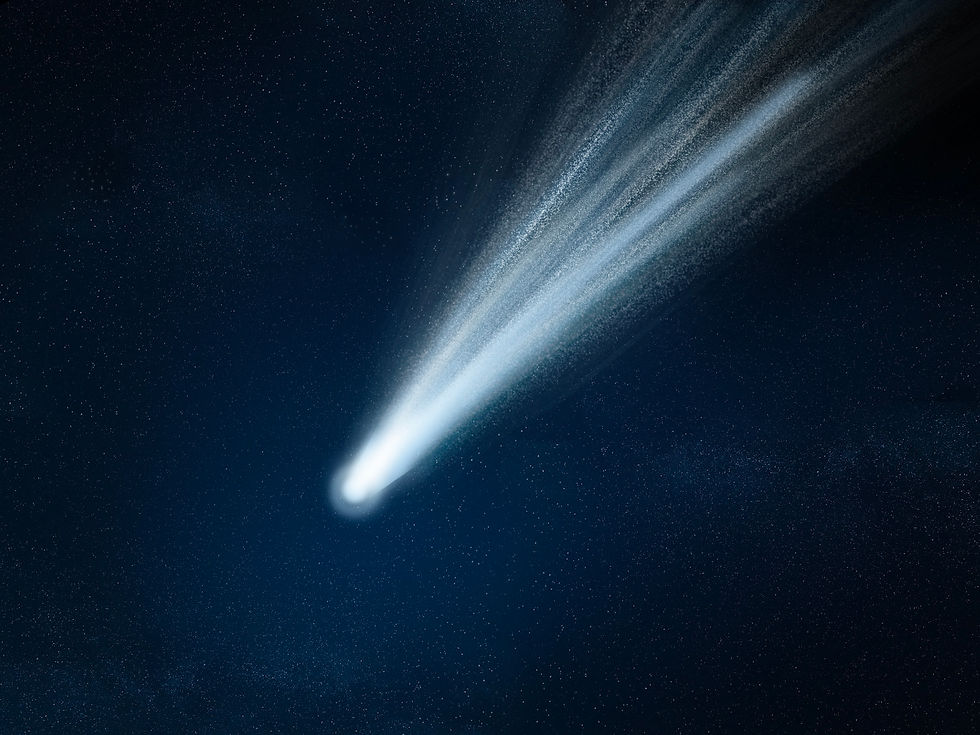Learn about Gigantic Snowballs: Comets
- Science Holic
- Feb 17, 2023
- 2 min read
Author: Jai hao Wu
Editors: Emily Chen and Ivan Feng
Artist: Denise Suarez
Comets are usually named after the person or spacecraft that first discovered them. Just recently, the C/2017 K2 comet, or just "K2," generated interest among interstellar enthusiasts. It was first discovered by the Panoramic Survey Telescope and Rapid Response System (PanSTARRS) just outside the solar system in 2017. On July 14, 2022, the comet was at its closest distance to Earth, roughly 172 million miles (277 million kilometers) away from reaching the Earth. While K2 continued to move towards Earth, many looked forward to observing the comet, for its beauty or to collect data.

Due to its unique position as the farthest active inbound comet ever seen, experts hope to collect useful data and make discoveries. Another interesting aspect of K2 is that it originated from the Oort Cloud, a proposed layer of predominantly planetesimals surrounding the sun anywhere from 2,000 to 200,000 astronomical units (AU.) According to telescope data, K2 started becoming active at 35 AU (1 AU is the average distance from the Earth to the Sun). For reference, Neptune is 30 AU from the sun, which is closer than that of K2’s. This sparked curiosity because it is unknown what caused a comet to be so active at such a far distance and low temperature.

Comets are essentially gigantic snowballs that are formed by frozen gasses, rocks, and dust. They have four individual components: nucleus, coma, ion tail, and dust tail. The nucleus is the solid mass in which the comet may contain particles such as water, carbon monoxide, ammonia, and methane. When they approach the sun, the heat melts off the outer layer (the coma) and leaves the vaporized gas to trail behind, stretching for millions of miles. The dust tail is a white-yellow shade because it is made of tiny particles reflecting sunlight. The ion tail typically appears blue because it contains carbon monoxide ions.
Overall, comets are phenomenal cosmic events that are worth the anticipation. While such events are rare, they always perk interest in the community and may bring discoveries in our limited understanding of space.

Citation:
Williams, Ashley. "K2, the brightest comet in our solar system, will swing by Earth. Here's
when to see it." USA Today, 14 July 2022,
https://www.usatoday.com/story/news/nation/2022/07/13/k-2-comet-approaches-earth-
july-2022/7786499001/
Mathewson, Samantha. "A huge comet makes its closest approach to Earth today. Here's
how to watch it live." Space.com, 14 July 2022, https://www.space.com/giant-comet-k2-
closest-approach-webcast
"About Comets". Lunar and Planetary Institute, 31 October 2022,
https://www.lpi.usra.edu/education/explore/comets/background/



Comments